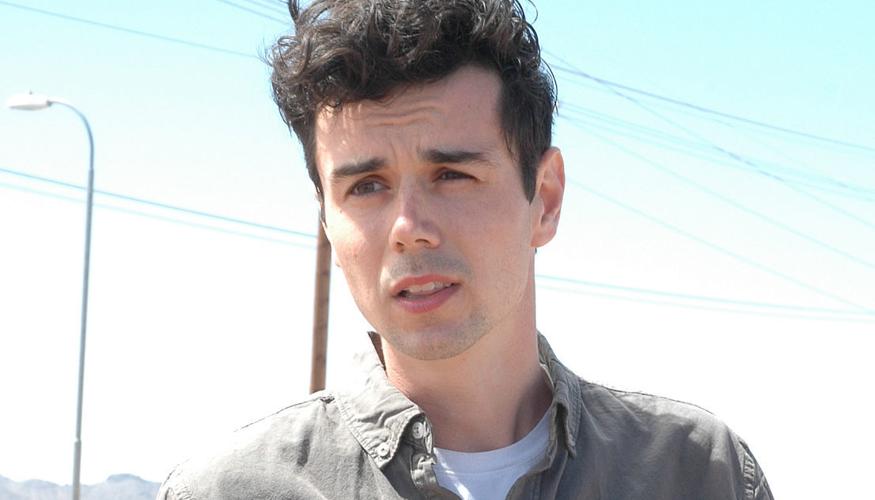Inspired by a successful strike in West Virginia, teachers are moving toward a possible walkout for better pay here in Arizona.
But there’s a big difference between the two states that the so-called #RedForEd movement may not have taken into adequate consideration: Charter schools.
West Virginia has none.
In Arizona, about 17 percent of the state’s students attend charter schools, and charter teachers make up around 10,000 of the state’s 60,000 public-school teachers. They have, so far, been largely left out of a movement led by district teachers and allied with the teachers unions, which don’t represent charter employees.
On Wednesday, April 4, teachers are planning to hold “walk-in” demonstrations at 10 or more schools in the Tucson area. A separate demonstration is scheduled for 4:30 p.m. at the Arizona State Office Building on West Congress in downtown.
But charter school teachers and administrators aren’t hearing much about such events.
“I think the issue of teacher pay is definitely something that all people in education feel strongly about,” Charlene Mendoza, principal of the Arizona College Prep Academy, told me Tuesday.
“I don’t know, nor have I been able to get answers to, how open this movement is to people who are involved in charters.”
Of course, administrators aren’t the vanguard of the movement. But neither did a charter teacher I know have much of an idea what the movement was about and how to join.
“The only reason I heard about it is a friend here mentioned it,” Erin Donaghy, a 4-6 grade teacher at Khalsa Montessori School, told me. “If I hadn’t had that lead and wasn’t watching the news constantly, I wouldn’t know.”
“There’s no direct line for teachers in a charter school to find out about things like that,” said Donaghy, who was my son’s teacher three years ago.
Donaghy is excited about the movement, and Mendoza, a member of the Arizona Charter Schools Association advisory board, is intrigued. But if this movement wants to succeed, it has to involve people like them.
It would also benefit the movement. The traditional public-school interest groups like the Arizona Education Association (the biggest teachers union) and the Arizona School Boards Association just don’t have that much pull with the GOP leadership of the Legislature or Gov. Doug Ducey’s office. Their perpetual complaints about school funding are easily tuned out as background noise.
The charter-school movement, on the other hand, has been closely allied with Ducey and legislative Republicans. In particular, the high-scoring charter chains like Basis schools and Great Hearts Academies have pull with the GOP in Phoenix.
You want a successful movement? Then you want those teachers on your side, and maybe the administrators and owners, too.
It wouldn’t be fair to say that the #RedForEd movement has ignored charter schools. It is an ad-hoc movement, allied with the teachers unions but not part of them, that is making this up as it goes along. Twice in recent conversations, leader Noah Karvelis has told me that the teachers movement recognizes the need to get charter teachers involved.
“We’re all in this together,” he said. “We need them with us. They’re part of this movement.”
He connected me to Emily O’Neil, a first-year teacher at Canyon Pointe Academy in Phoenix. She’s serving as a “site liaison” for that charter school’s teachers to the broader movement, trying to get the teachers to wear red on Wednesdays and maybe conduct a walk-in of their own. Basically, she’s trying to get them engaged.
As with most charter teachers, O’Neil works on a year-to-year contract. She recognizes that taking a public role in the movement could be risky.
“Anything with union or labor rights has a risk,” she said.
“We are at really, really low funding for our schools in Arizona. They (students) are worth the risk.”
Charter teachers appear on average to have lower pay than district teachers. An analysis of available data by the Grand Canyon Institute of schools’ annual financial reports, which list teacher pay in aggregate, showed about a 20 percent average difference, said Dave Wells, research director of the institute. The charter schools’ association does not accept that difference as accurate, but could not offer a different assessment.
In any case, charter schools could arguably have more to gain from the movement than districts: They are funded completely from state general fund money, whereas district schools also are funded through property taxes and have the ability to ask voters for a budget override.
However, the charter school association hasn’t taken a position on the movement’s demands for a 20 percent increase in teacher pay and restoration of $1 billion in cuts to school funding.
If the #RedForEd movement goes on to lead a teachers strike, and if it doesn’t include charter schools and teachers, that could accelerate the trend of students leaving district schools for charters, a problem they didn’t have to worry about in West Virginia.
“Typically, we’re on different teams because charters are accused of stealing district students,” Donaghy told me.
“It would be nice if here’s one place where we could overlap,” she said of the broader movement.
If they don’t, the movement is risking not just a failure to win its current demands, but accelerating flight from the district schools where most of them teach.





